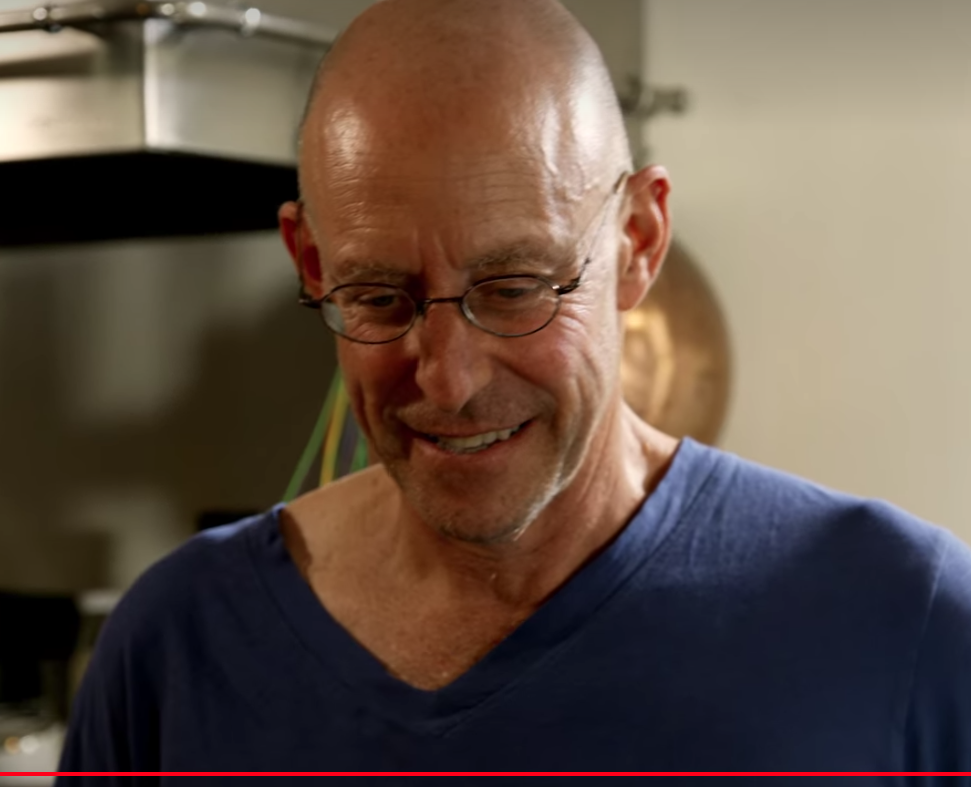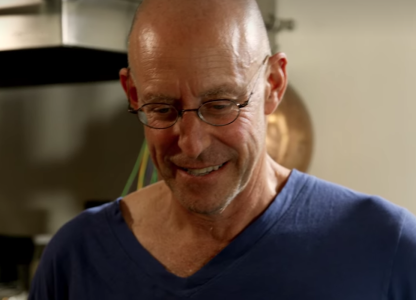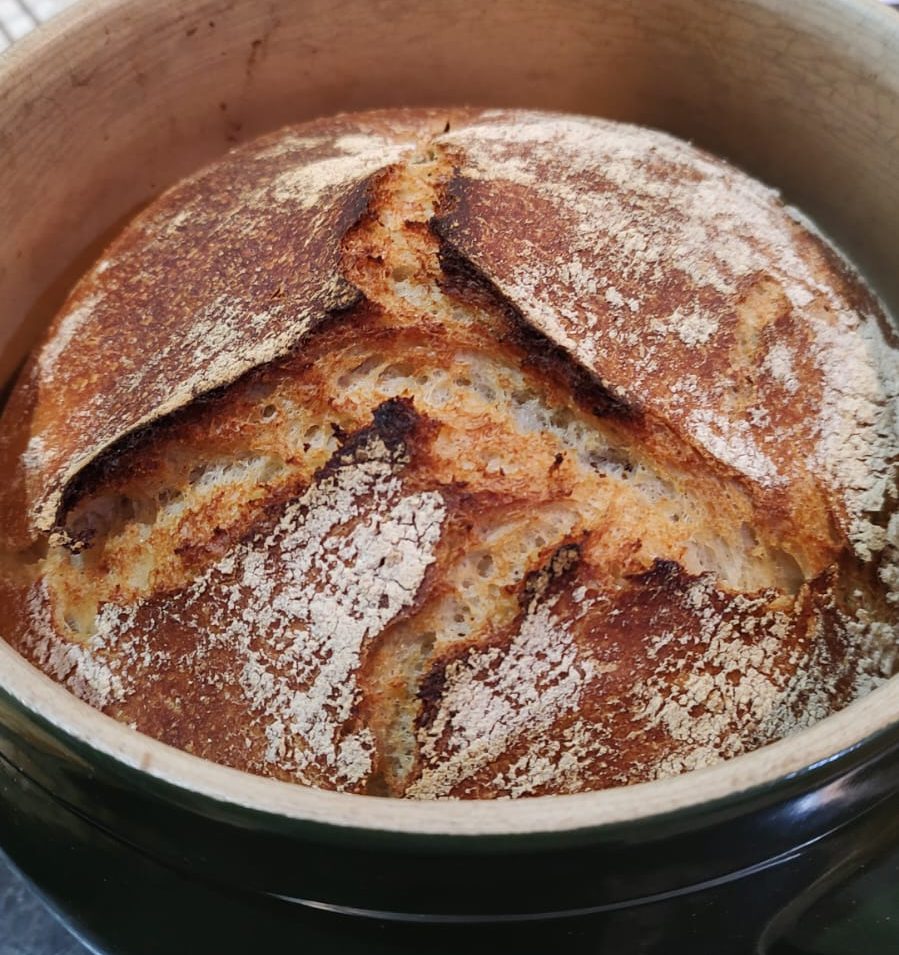As it may have happened for many home-baked bread enthusiasts?
Let’s backtrack to how I found myself “here.”
It started with nutrition and Dr Mosley advocacy for a more Mediterranean diet that throws caution towards eating “hidden sugars” and “rapidly digestible carbohydrates that keep your pancreas pumping out insulin,” that keeps us hungry and eating more. On Dr Mosley’s shortlist of nutritional villains: “white pasta, rice and bread, as well as potatoes and sweet potatoes,” (Fast 800 Recipe Book, p19).
As a result, I ate much less “bread,” almost none, and adopted Dr Mosley’s “store your bread in the freezer” and “mostly toast your bread,” resistant starch tips. Both freezing and toasting changes or modifies the starch molecules in the bread so they are more resistant to digestion. A 2008 Oxford Brookes University study reported toasting frozen bread lowers the blood sugar response by almost 40%, the cook-cool-cook approach applies to pasta and rice too.
Learning more about ultra processed foods (UPFs) and “shop bought foam bread,” and its lack of fibre, use of additives and gut damaging emulsifiers further convinced me to avoid “bread” generally. Why does “commercial bread” require thirty-one to thirty-seven ingredients when sourdough bread has just three?” Questions journalist Michael Pollan – “Cooked – Air.”
“Shop bought brown bread” was added to the list after listening to Dr Tim Spector talk about the “5 foods I got wrong,” (simply, more often than not, shop bought brown bread, is dyed shop bought white bread). That said, Dr Spector also made it clear that not all bread is equal, signposting dark rye bread, packed with fibre, delays how quickly the sugars get into our bloodstream and slow fermentation sourdough.
What I did not know
So now is as good a time as any to admit I didn’t know the difference between yeast-baked bread and sourdough. Unlike other wholesome breads, which often rely on baker’s yeast to rise, sourdough breads use a “starter” – a living colony of bacteria and wild yeast that causes the bread’s dough to rise through slow fermentation. No need for all those additives.
Two final steps. Vanessa Kimbell’s and Dr Tim Spector’s conversation on the Zoe podcast about whether “White bread is healthy,” is summarised here and the nutritional assessment is hard to ignore.
Finally, back to Michael Pollan’s documentary. It was Pollan’s enthused advocacy and joy of home baking sourdough that encouraged me to explore home-baked yeast bread in the first place and move onto sourdough. It was a wonderful signpost as to where “there” may be for anyone with a passing curiosity in cooking, baking or fermented food with fairly achievable and motivating results.
I began feeling daunted, and I ended feeling confident, and an enormous sense of, uh, satisfaction. I think of all the things I learned how to make… making a decent loaf of bread has been the most satisfying.
Michael Pollan
Don’t eat anything your great-grandmother wouldn’t recognise as food.
Michael Pollan
What had I learnt?
- Whole grain, high fibre, slow fermentation bread with minimal added sugar may be the best options – less of a villain
- Bread is far from simple and as complex as you wish to explore and educate yourself on
I was ready for whole grain, high fibre, home-baked and no sugar, if not yet ready for slow fermentation sourdough. If not yet ready, I was curious having listened to Vanessa Kimbell, perused The Sourdough School website and ordered her book on transfer from the local library.
What I did not know at my beginning
Of flour, water, yeast and salt – it is the interplay of flour and water that sets the level of challenge. The type of flour (specifically the protein content) is a factor, with different flours absorbing more or less water. However it is the percentage of water or “hydration” the level, that ramps up the skill required to ‘handle’ the dough.
Nutrition and Wellness
The confluence of nutrition-wellness in home bread baking is tangible, with sourdough it is amplified even more loudly (I encourage you to watch “Cooked – Air” and see Pollan’s response) given the added science of fermentation, digestibility of bread and gut health, microbial diversity, and more. There is the science and scholarly research around gluten-related disorder, nomenclature and classification, and more recently “psychobiotics,” the medicinal wellness (Baking As Lifestyle Medicine (BALM)) and fermented foods as non-pharmacological “medicine.” As I said, as “far from simple and as complex as you wish to explore and educate yourself on.”
Up until this point, I was unaware of the depth of interest in the science and applied science, medicinal and well-being benefits of bread-baking (though particularly of slow fermented sourdough) and the depth of commitment of an active, engaged, artisan home-baked bread community, largely supporting one another and sharing photographs of their bread, crusts and crumbs. A community with a very social and “pay-it-forward” sense of self. No better example than the ‘bake two, share one’ principle, (I think that is self-explanatory).
Explore and Educate
There is so much to explore, so much to read, to listen to, to watch and educate yourself about that it is all too easy to be left dazed and blinded by the enthusiasm of others.
Apart from dough balls and pizza bases I was, we were, complete home-baked bread novices. When I say “we,” I am referring to my fifteen year old son and I. Without any specific equipment apart from a set of digital scales we got our hands floured and got started and soon after experimenting.
I will add here that there is strong commentary towards experimenting less and knowing one bread more personally. That is knowing one flour (your water and your salt), your kitchen environment, one approach really well and recording your journey or decisions. Knowing where “here” is and record where “there,” was. This is even more significant when the variables include using your own “starter,” and the challenge of home-baked sourdough. With sourdough, less is more. Isn’t hindsight is a wonderful thing. We will come to sourdough in a subsequent post.
I would later learn that presenteeism and scheduling (and later shaping) have an elevated status in home-baked bread baking, at a very practical level and with artisan outlook. Of course, all that was set to one side as I was keen to home-bake and produce a loaf. As I recall, I was keen for it to be successful too. Time to experiment – or bake.



Pingback: Home-baked bread to home-school sourdough (part I) – Edventures
Pingback: Home-baked bread to home-school sourdough (part v) leavening agents and fermentation processes – Edventures
Pingback: Home-baked bread to home-school sourdough (part III) – first yeast bread – Edventures
Pingback: Home-baked bread to home-school sourdough (part viii) – price check and save money – Edventures
Pingback: Home-baked bread to home-school sourdough (part iv) before baking – Edventures
Pingback: Home-baked bread to home-school sourdough (part vi) schedules, shaping, stitching and tension – Edventures
Pingback: Home-baked bread to home-school sourdough (part x) In search of ‘spring’ – Edventures
Pingback: Home-baked bread to home-school sourdough (part vii) – impatience and ambition – Edventures
Pingback: Home-baked bread to home-school sourdough (part ix) – dutch ovens, shape and size (and weight) – Edventures